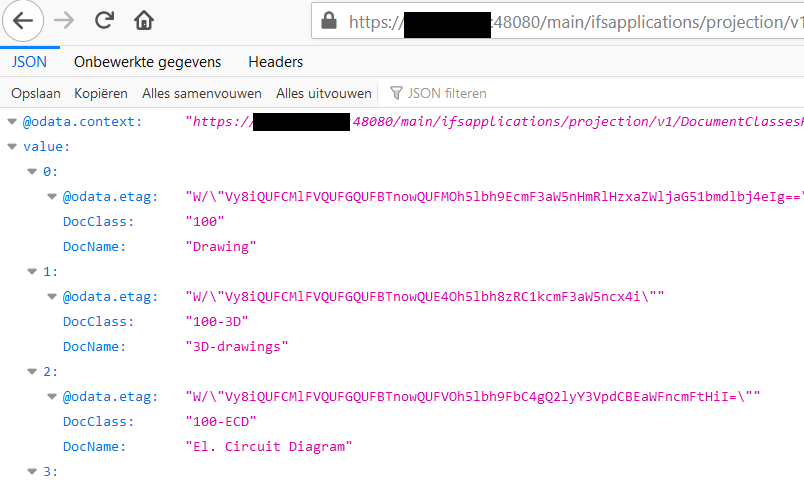I've been trying to understand the api calls via OData.
For savety measures I've renamed our server instance to xyz.
So far I found out the following:
I logged on to an IFS10 environment via https://xyz:48080. I selected Entrance to Aurena for that.
I opened a new tab in Google Chrome and copied in the following
https://xyz:48080/main/ifsapplications/projection/v1/DocumentClassesHandling.svc/DocClassSet?$select=DocClass,DocName&$format=json
This returns a list of available Doc Classes and their description (json formatted).
Very nice.

Using the same URL and pasting it in FireFox (with no IFS10 running) the server returned the following:
https://xyz:48080/openid-connect-provider/login?rf=p8dCXSBiIY
The logon screen is shown. Seems logical to me. No idea what the parameter rf means, but I logged in (with a full access user id).
This resulted in:

Nice that the json format is even made readable (again I learned something here).
If I logout from Google Chrome IFS10 and request the same api information on document classes I get the same as in FireFox: login screen is shown.
My conclusion I need to establish a connection before I can request a REST api. Makes sense.
Now my question:
How do I set up such a connection, without the login screen?
The background is that I want to perform a REST api from another application. So this quesiton basically comes down to: give me an example to get results in a non IFS application from an IFS environment.
Regards,
Steve






